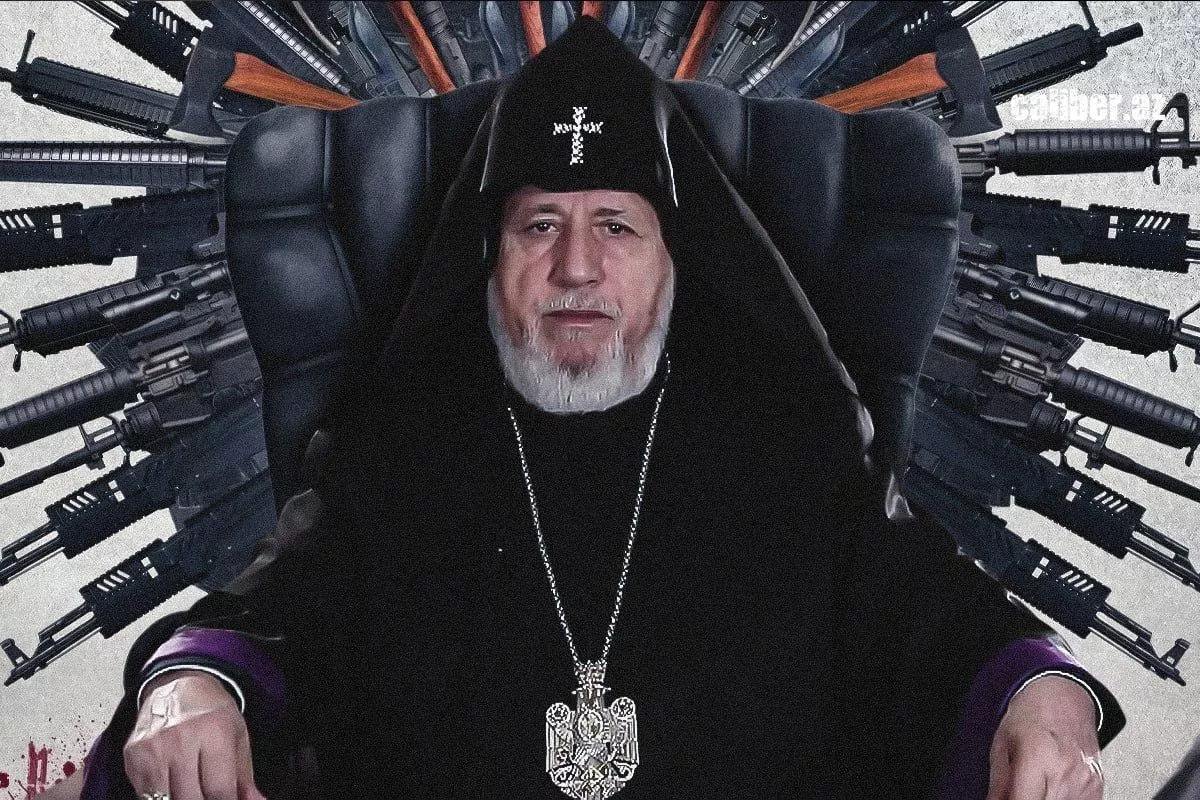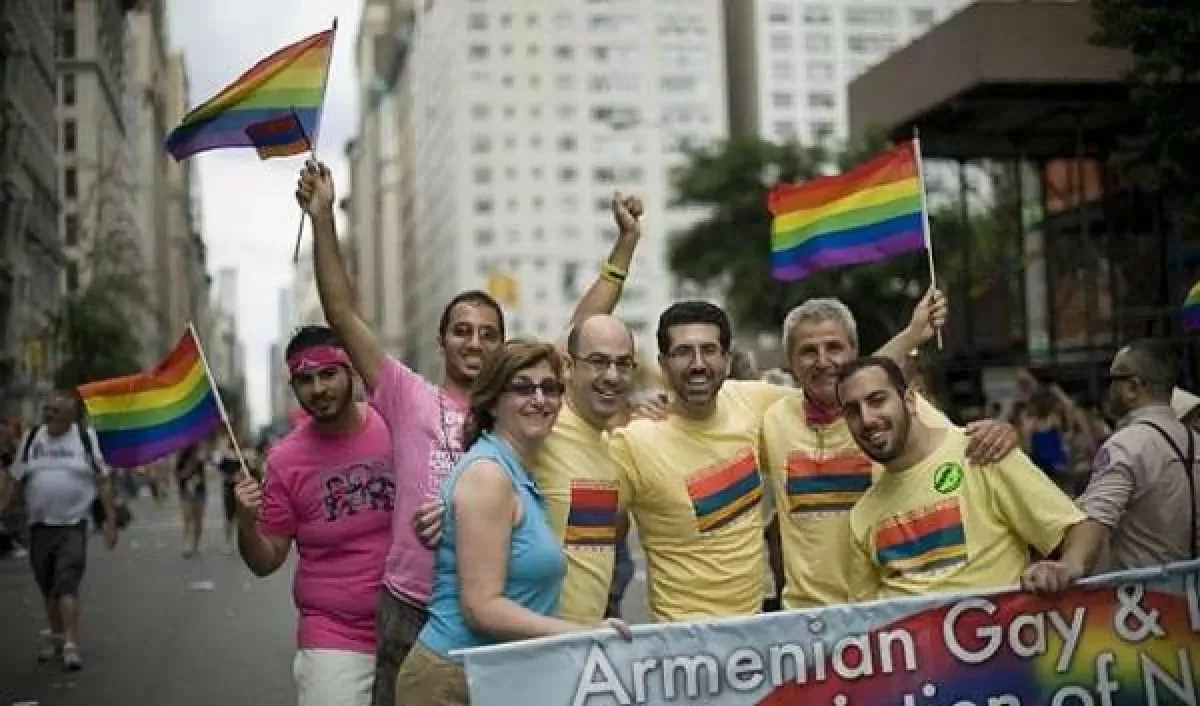Premier vs patriarch: Battle for Armenia’s future Pashinyan challenges Garegin
The renewed escalation of tensions between the Armenian leadership and the Armenian Apostolic Church (AAC) was a deliberate move by Prime Minister Pashinyan. Last year’s ecclesiastical “Maidan” against the border demarcation with Azerbaijan ended in failure, proving that the AAC is not capable of playing such complex political games. Therefore, the authorities have no need to pressure the Church for the sake of political survival. And given Yerevan’s limited resources, this is unlikely to be mere revenge for the Church’s past intrigues.
So what’s the real reason? Crushing the AAC is necessary for Armenia’s liberal-nationalist establishment to pave the way for the so-called “European integration” project—one that will require a revision of the fundamental cultural norms of Armenian society.
The autumn of Catholicos Garegin
From the outside, Prime Minister Pashinyan appears to be the more energetic player in the Armenian government’s clash with the AAC. On June 3, writing on his Telegram channel, he demanded that Etchmiadzin—the central governing body of the AAC—launch an investigation into whether the current head of the Church, Catholicos Garegin II, had broken his vow of celibacy. He also pointedly called for the Armenian state to be granted a role in the selection of the Church’s leader.
In response to Pashinyan’s accusations against the Church and its top clergy, the Supreme Spiritual Council of the Armenian Apostolic Church, chaired by Catholicos of All Armenians Garegin II, warned of a looming “split in Armenian society” and the “undermining of the spiritual unity of the nation” brought about by the Prime Minister’s anti-Church campaign. Through social media, the Council urged state institutions to put an end to what it called Pashinyan’s “illegal and shortsighted policy.” Of course, in the theatrical battlefield of social media, such official statements are no match for the posts of a former journalist.

In this new campaign by the Armenian authorities, what stands out is the apparent lack of realistic political objectives. It resembles a show, but given the cost of such a performance, questions arise as to why it is being staged and what agenda it serves. From the very beginning of this new round of conflict, it all looked like a farce—starting with Prime Minister Pashinyan’s remarks at a government meeting on June 5, where he began musing that churches in Armenia had become "closets" where citizens dump unwanted items. This, he claimed, offends him as someone "endowed with a sense of spirituality." These musings were not linked to any concrete political decisions, which made them all the more remarkable. The Church responded by condemning the Prime Minister.
The following day, Pashinyan took to his social media accounts, posting unfiltered comments on the issue of morality within the Church. He specifically focused on the observance of the vow of celibacy by senior clergy, demanding that those who violated it be removed from their positions. More pointedly, Pashinyan targeted the head of the Armenian Apostolic Church, Catholicos Garegin II, claiming that he was unfit to hold his position because, according to Pashinyan, he has a child. The Prime Minister was supported by his wife, Anna Hakobyan, who brought up allegations of pedophilia within the Armenian Church.
Naturally, Pashinyan’s relationship with the AAC has never been good since the military defeat of 2020. The Church bet openly on old-school revanchism, and immediately after the debacle, Catholicos Garegin II blamed the Prime Minister for the loss and called for his resignation.
Pashinyan, for his part, sought ways to ensure the survival of his government by pursuing the only agenda imaginable for non-Western liberals — a shift towards the “collective West.” As part of this shift, the Armenian leader also took steps towards normalising relations with Azerbaijan, initiating the process of border delimitation. In response, in May last year, Archbishop Bagrat Galstanyan of the AAC’s Tavush Diocese came out against the demarcation and launched a months-long campaign calling for the government’s resignation.

Some Armenian commentators say that thanks to its revanchist slogans, the AAC’s popularity—which had fallen after the change of power in 2018—soared again after 2020, reaching around 80% over the past year and a half, making the Church a serious political opponent. Symbolically, such a rating might exist, but the real influence of the AAC was seen in the recent months-long “church Maidan” campaign (supported by other revanchist opposition forces) and in the previous four years of fierce opposition by church hierarchs to the Armenian government. In both cases, however, all that energy fizzled out—the AAC’s weight in politics should not be overestimated.
Pashinyan has long aimed to bring the AAC under control and came to power not only with a programme to reform the Armenian state but also with slogans calling for a change in the Church’s leadership. However, there is no urgent domestic political necessity for him to destroy the AAC. On the contrary, doing so would distract from a much more important issue — constitutional amendments aimed at normalising relations with Azerbaijan. Without these amendments, the primary goal of Pashinyan’s team — aligning with the “collective West” on any terms and in any capacity — cannot be achieved...
Negotiate, buy off, or overthrow?
Here we come to the key question that quietly underpins every move of the current Yerevan leadership. The Supreme Council of the AAC linked the authorities’ anti-church campaign in its statement to the “servicing of the ambitions of external Armenophobic forces,” yet it failed to break free from its usual framework by simply blaming “Azerbaijani propaganda.” The fact that the campaign is more likely driven by external factors follows not only from the absence of internal reasons for it within the Armenian leadership but also from how openly it is being conducted without clear objectives — the resignation of the lifelong-elected Garegin II cannot be considered a realistic goal; such a thing would be done differently and could be attempted later.
Patriarch Garegin, who has led the AAC since 1999, has been criticised not only by subordinate priests and laypeople but also by the heads of the two autonomous patriarchates of the AAC — Jerusalem and Constantinople — who pointed to his excessive focus on property matters within church life and his dictatorial style of leadership. A faction of the clergy even broke away from the AAC, led by the former archbishop of its “wealthy” Russian diocese, Tiran, whom Garegin “defrocked” in order to hand the diocese over to his brother.
There are plenty of examples not just of greed but of outright corruption. Public scandals have long become a regular occurrence within the diaspora, where not only some Western European parishes have slipped out of Echmiadzin’s control (which could still be blamed on “geopolitics”), but an actual split has emerged in Russia—even though the AAC there effectively leans towards a pro-Moscow stance.
These scandals are quite colourful: the AAC demands heavy fees from parishioners in Russia for any rituals, forces them to pay high salaries to priests, and even requires transferring land under khachkars to the Church! The clerics managed to shock even the seasoned Moscow businessman Ruben Grigoryan, who complained that the “Armenian Church has been ‘captured’ by people involved in the global seizure of other people’s property.” Considering Grigoryan’s own controversial reputation for dubious real estate deals and scandalous developments, this statement comes from someone who really knows the business.
As a consequence, in some regions of Russia, Armenians have even started inviting Russian Orthodox priests from the Russian Orthodox Church (ROC) to perform rituals instead of the AAC clergy. When the BBC and similar media outlets have produced engaging reports about the AAC or its internal splits, it wasn’t hard for them to gather these facts.

In other words, the leadership of the AAC has long been shaky under the weight of its own actions. Meanwhile, Pashinyan, who insists on his own principled stance, instead of pushing for a change in the Church’s leadership after coming to power... chose to form an alliance with Garegin! He not only halted the campaign to remove Garegin but even helped the Patriarch suppress opposition within the Church linked to Tiran and the influential monk Koryun. Incidentally, the latter had openly hoped to “ride the wave of Pashinyan” in the late 2010s to overthrow Garegin. Armenian experts assured Western journalists at the time that the government had “enough informal levers to cause the resignation of the head of the AAC.”
But Pashinyan went for a “deal” with Garegin, pledging to respect the separation of church and state, even ceasing his criticism of the hierarchs. He was increasingly seen at events alongside the Catholicos. Garegin even donated $100,000 to Pashinyan’s wife’s charity fund… It was only after 2020 that this political symbiosis was disrupted, though, as noted, despite the Church’s repeated attempts since then, it never posed a real threat to the prime minister.
The gay parade in Yerevan
In short, Garegin can be removed—or at least neutralised—but not through public attacks, rather by mobilising opposition to the Patriarch within the AAC, something Pashinyan has so far not done. This is why we speak of the lack of realistic goals in his attack on the Church. Yet this war on the Church is interesting also because Yerevan currently faces many other truly urgent issues, especially the delicate balancing act between Russia and the EU, as well as the peace process. However, the ultimate goal behind everything is the move “to the West” through so-called “Eurointegration.” This is where any analysis of Pashinyan’s campaign against the Church should begin.
The AAC represents a set of “different” cultural values, and its mission essentially lies in preserving them. Eurointegration, by the way, involves adopting a particular version of liberal moral, ethical, and cultural norms — which often play a more crucial role in the “acceptance” process than socio-economic or political issues. Over the past couple of decades, a country can join the EU even with a weak economy, nationalist dictatorship, and corruption. But it cannot if it fails to meet ideological criteria — particularly regarding LGBT rights, which implies a need to reshape traditional religious institutions. It is precisely on these parameters that liberal elites build their system of distinguishing “insiders” from “outsiders.”

It’s hard to believe from the outside, but even the slightest deviations in this area are perceived by Western liberal elites as an attack on the very core of their morality and ethics. Other human rights can be reinterpreted, but these cannot. Just last week, EU countries discussed the possibility of stripping Hungary of its voting rights over its disputes with the Brussels establishment. The final straw for EU liberals was Budapest’s adoption of a law restricting the holding of gay parades, citing the need to protect children. The liberal mouthpiece Politico quoted an anonymous Brussels official saying, “If there’s an existential threat at our borders, how long are you going to put up with that?” Here, “put up with” refers specifically to the restrictions introduced—not Hungary’s foreign policy moves, which have already been criticised.
BBC reported in connection with the law: “Tensions in relations between Hungary and most other EU countries are rising: 17 EU countries, including Germany and France, have called on the European Commission to punish Budapest for passing a law that effectively bans gay pride — the parade of LGBT community members.”
Pashinyan is well aware that advancing Armenia along the path of European integration involves changes in this very domain. Even if such conditions are not formally codified in official documents, it remains a reliable way to signal to Brussels elites: “I’m one of you.” The recent Georgian example has also shown that even if a country tackles disorder, builds an effective state, and fosters a free society, it will not be forgiven for the slightest deviation from the moral and ethical doctrines projected from Brussels.
Naturally, Pashinyan must proceed gradually. And the first step for the Armenian leadership would be to apply sustained pressure on the AAC. Conveniently, the Church is already weakened, riddled with corruption, and discredited in the eyes of many — making it an ideal target for soft confrontation under the guise of reform or liberalisation.
There is a rather ironic twist to this entire situation. If one looks deeper, it becomes clear that the main participants in this conflict are, in fact, products of the same Armenian nationalist ideology — only operating on different generational "systems," which is why they are increasingly at odds with each other.
Catholicos Garegin II is a hierarch who rose to power in 1999, during a period intoxicated by the territorial conquests of the post-Soviet collapse. His brand of socio-cultural conservatism is closely tied to reliance on Moscow — a strategic alliance without which the land grabs of the Gorbachev–Yeltsin era would not have been possible.
By contrast, when Pashinyan came to power in 2018, the hangover from those territorial ambitions had already set in. His bet was now placed firmly on “the West.” The current showdown between them is a cynical interlude — a clash between fading narratives — in a play that has only a tenuous connection to either Christianity or the deeper strands of Armenian culture.
This entire episode serves as a telling illustration of the myth of the uniquely sacred “first Christian nation” — a construct cultivated and manipulated by Armenian nationalists for modern ideological purposes.








